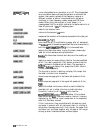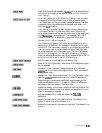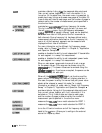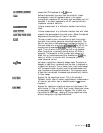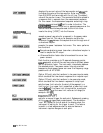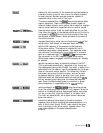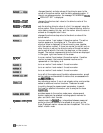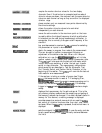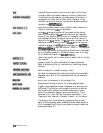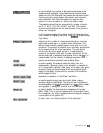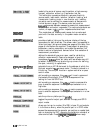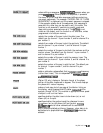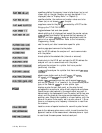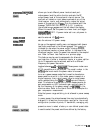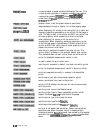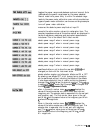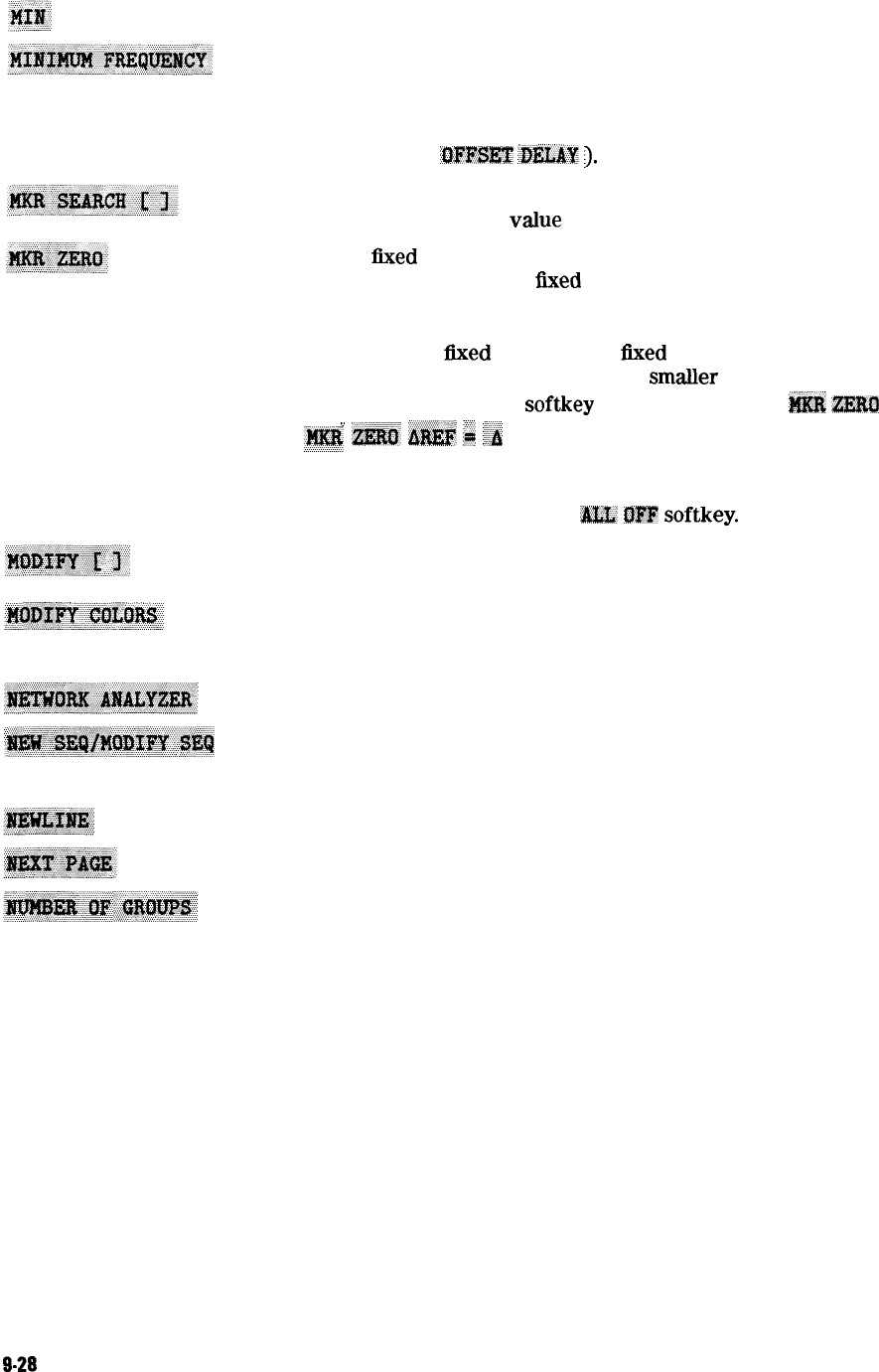
moves the active marker to the minimum point on the trace.
is used to define the lowest frequency at which a calibration
kit standard can be used during measurement calibration. In
waveguide, this must be the lower cutoff frequency of the
standard, so that the analyzer can calculate dispersive effects
correctly (see
3X?IWB
&5UlY
).
leads to the marker search menu, which is used to search the
trace for a particular
value
or bandwidth.
puts a
fixed
reference marker at the present active marker
position, and makes the
fixed
marker stimulus and response
values at that position equal to zero. All subsequent stimulus
and response values of the active marker are then read out
relative to the llxed marker. The
fixed
marker is shown on the
display as a small triangle A (delta),
smaller
than the inactive
marker triangles. The
softkey
label changes from
$$l!B
ZEBU
to
.,.
.waft
m’
A*
.&
.:<A
and the notation “AREF =
A”
is displayed
. . . . . . . . . .
at the top right comer of the graticule. Marker zero is canceled
by turning delta mode off in the delta marker menu or turning
all the markers off with the
UL
WF
softkey.
leads to the modify cal kit menu, where a default cal kit can be
user-modified.
present a menu for color modification of display elements.
Refer to Adjusting Color for information on modifying display
elements.
sets the analyzer to network analyzer mode.
activates the sequence edit mode and presents the new/modify
sequence menu with a list of sequences that can be created or
modified.
puts a new line command into the display title.
steps forward through a tabular list of data page-by-page.
triggers a user-specified number of sweeps, and returns to the
hold mode. This function can be used to override the test set
hold mode, which protects the eledro-mechanical transfer
switch and attenuator against continuous switching. This is
explained fully in the Test Set Attenuator description in the
“Application and Operation Concepts” chapter, in this manual.
If averaging is on, the number of groups should be at least
equal to the averaging factor selected to allow measurement of
a fully averaged trace. Entering a number of groups resets the
averaging counter to 1.
B-28
Key Definitions



